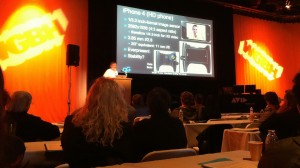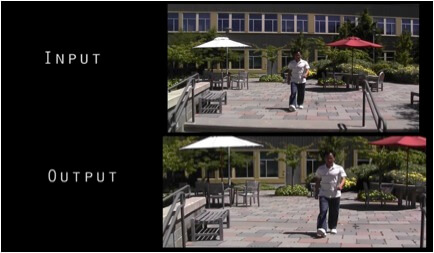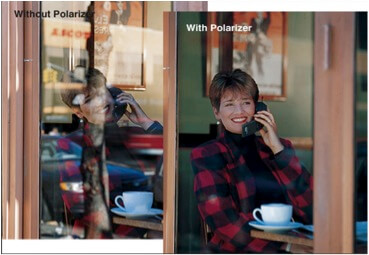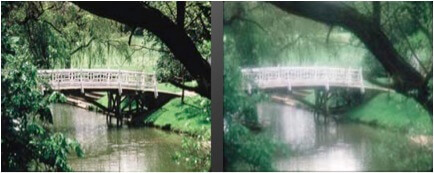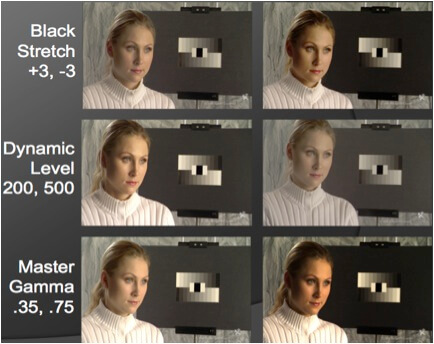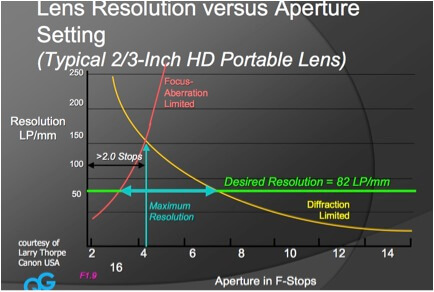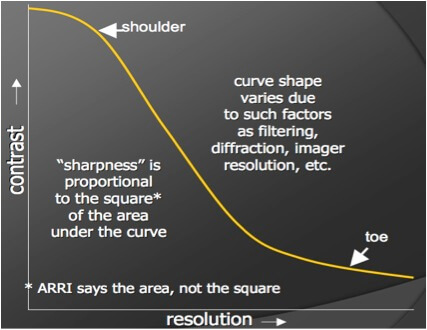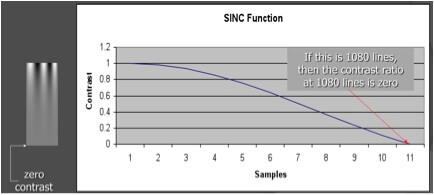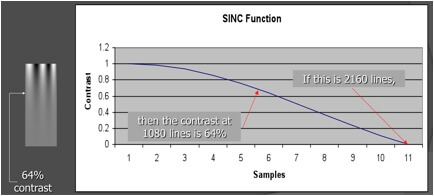Part 01 of the PBS Quality Group Workshops…
Overview
Mark Schubin is a multiple-Emmy-award-winning SMPTE Fellow, working in television since 1967, and writing about it since 1972. He’s shot for the Rolling Stones, lit Luciano Pavarotti, mixed Stevie Wonder, and performed forensic analysis for the Woody Allen/Mia Farrow child-custody battle. His clients range from the Metropolitan Opera to Sesame Street, Court TV, The News Hour, MTV, the AFL-CIO, and the World Book Encyclopedia.
- Mark’s Blog – If you visit the “Get the Download” page, you’ll find slides and audio recordings for many of his talks.
- Slides (.ppt, .pdf) – The talk ended up getting a bit technical towards the end, so it would be worth going through his materials. The PowerPoint slides in particular have audio when played in presentation mode, so you can hear him walk through the content.
- Lowel Lighting Tool – An interactive tool for learning and practicing different lighting setups.
Key Takeaways…
- Video acquisition affects everything that follows. Problems should be fixed there whenever possible
- Acquisition equipment doesn’t just consist of cameras. Lighting, lenses, filters, imagers, & mounts play major roles.
- Storage and distribution is probably the only “equipment” that doesn’t have an effect on the image…just on money, time, weight, size, etc.
- Operator actions affect the image more than most camera characteristics, whether it be lighting, lens adjustments, processor settings, etc.
- Sharpness is affected by contrast as well as resolution. Contrast is affected by diffraction and lenses
In Camera vs. In Post
What to do in camera, and what to do in post require careful thought, as doing things in post may alter your image in undesired ways. For example, image stabilization can be achieved (within reason) in post, but you will lose image information:
When it comes to optical filters, “correction” filters should be done in camera:
Whereas effect filters are better left for post, in case unexpected production changes occur (e.g. change in location, time period, etc.):
Processer settings such as black stretch, dynamic level, and master gamma can be done in post to create a different image look, but when you do this, you need to consider whether the change in look would warrant other changes in the raw image such as iris, lighting, makeup, hair, and costume change. For example, in the center right image below, if this is the look you create in post, would it have been useful for the actor’s costume to have been different to offset the muted look?
Lighting
Lighting was covered briefly, the 2 useful bits of it being
- Lowel Lighting Tool – Lowel offers an interactive tool for learning and practicing different lighting setups
- RoscoView – Polarizing filter you can install on a window, with a matching camera polarizer, allowing you to rotate the camera filter to adjust the amount of external light in a shot, especially as the external light is changing.
Lens
For lens with comparable specs, the lens quality is really the distinguishing factor, i.e. glass quality, number of pieces, uniformity, etc. There are also “defects” to consider, which all lens have (flare, ghosts, vignetting, etc.), as well as aberrations (“defocusing”).
In understanding how lens resolution and aperture setting affect image sharpness, it’s important to understand diffraction worsens at narrower apertures, while chromatic aberrations worsen at wider apertures. This means for each lens, there is an ideal aperture setting that can minimize both (and thereby maximize resolution):
In order to operate at the ideal aperture, you should consider:
- Adding/subtracting lighting to the scene
- Gain control, though watch for noise
- Shutter, especially at larger apertures
Resolution, Contrast, & Sharpness
When talking resolution, there are different types to consider:
- Temporal (f/s) vs Spatial
- Dynamic (moving) vs Static
- Chroma (color) vs. Luma
- Non-dimensional (lines, pixels) vs. linear (dots per inch, line pairs per millimeter)
- For a 16:9 image sensor in a 2/3-inch format (5.4mm)
- 1080 / 2 = 540 line pairs (lp) / 5.4mm = 100 lp/mm
- For a 16:9 image sensor in a 2/3-inch format (5.4mm)
Modulation-Transfer Functions (MTF) measure sharpness based on the relationship between luma resolution and contrast:
In general, the MTF shoulder drives the amount of sharpness. Note, any “ness” are considered subjective functions (e.g. sharpness, brightness, etc.), while any “tions” are considered objective functions (e.g. resolution, etc.).
If you want to increase the sharpness of your image, you effectively have to increase the area under the MTF curve. One can do this by selecting a larger imager size. A larger imager size not only affects lens quality, dynamic range, and depth of field, but the bigger the imager, the more contrast you have at lower resolutions, and the more contrast you have, the sharper the image will be. For example, with a 1080 resolution camera, you might have:
But with a 4K camera, it would look like:
This is why some say you can get better HD pictures if you use cameras that shoot at resolutions higher than HD (i.e. a 4K cameras).


